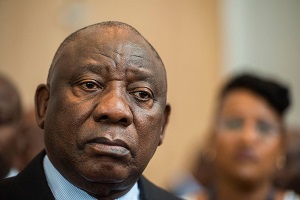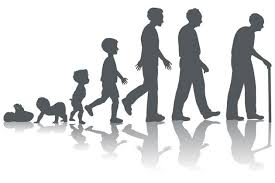Ebrahim Moosa – Radio Islam | 22 August 2016
The flurry of coalition talks and the formal election of mayors we have witnessed in several councils across our nation this week marks the culmination of the 2016 election season, and the official commencement of another mandate of governance.
The emergence of new trends at the ballot box and the shake-up of our politics have been interpreted by many as a healthy harbinger for our democracy. This may well be the case, and, as such, should be commended as a step towards the maturation of South African politics.
Of equal importance though, at this stage of our nascent democracy, should be an affirmation of the potential certain unhealthy trends tied up with each election cycle that just seem to be exacerbating over time, can have on the erosion of our freedom.
“This election season will cost more than five billion dollars,” read a recent internet meme from the United States.
“There must be a cheaper way to find the worst people in society”.
Yes, South Africa is not the USA, and a blanket judgement on the morality of all public representatives is certainly out of order. But in the kernel of its message, the meme makes a compelling case.
A succession of reports from all over the world are now repeatedly use the word ‘obscene’ to describe the amount of money poured into election campaigning.
“The money spent over the duration of these campaigns is nothing short of obscene,” wrote a concerned citizen to the New York Times last year.
“U.S. election spending an obscene joke,” read the headline of a 2014 report from Canada that went on to spell out its fears of a spillover of a money-soaked American style of electioneering to its country:
“How obscene is U.S. election spending? Consider a few examples.
“In Georgia, a state with a population of 10 million (Ontario’s population is 14 million), total spending on last week’s mid-term elections topped $100 million. The U.S. Senate race alone accounted for nearly $80 million. Voters were bombarded by some 65,000 broadcast TV ads — that’s right, 65,000 ads.
“In Arizona, Republican candidate for governor Doug Ducey and pro-Ducey groups had enough money to pay for 10,000 TV ads, most of them attacking his Democrat opponent Fred DuVal. The strategy and the money paid off because Ducey won easily. More than $8 million for the attack ads came from outside the state.
“Overall, a whopping $3.7 billion was spent on the U.S. mid-term elections for Congress, according to the Washington-based Center for Responsive Politics — and that doesn’t include what was spent on races for statehouse jobs such as governor.”
At $6 billion, the 2012 US Presidential election stands as the most expensive campaign of its kind in history, with a mind-boggling $30.33 being spent on campaigning every second.
This year, this insane spending trajectory is expected to again be exceeded, and with the rapid growth of online marketing, this segment of campaigning is slated to demand ever more juicy cash injections going forward.
In 2016, political ad spending will reach a record high of $11.4 billion, 20 percent more than was spent back in 2012, according to Borrell Associates, a research firm. About $1 billion will be spent on digital media, a nearly 5,000 percent increase from the measly $22.25 million spent on digital ads back in 2008. And, says the report, this is only the beginning.
By the time of the 2020 US presidential election cycle, it projects spending on digital media to explode to nearly $3.3 billion dollars.
The concern for us South Africans then should be, in a completely interconnected world, the potential impact such trends can have on our culture of elections.
Already, some political parties have been running campaigns conspicuously modelled on American ones – and with that comes a raise in the ceiling of political advertising budgets.
Evidence suggests this capitalist-inspired culture of big election spending is perhaps already here.
Take for instance the bill for the recent municipal elections. Preparation and campaigning for the elections cost the African National Congress (ANC) more than R1 billion, according to the party’s head of campaigns.
Nomvula Mokonyane explained the national tally included the cost of holding rallies, paying volunteers, buying t-shirts and preparing candidate lists.
Likewise, other key political players conceded that they had spent more money in recent campaigns than ever before.
EFF elections spokesperson Veronica Mente said their budget for campaigns ran into millions, whilst the DA’s Phumzile van Damme said they had left no cent unspent on spreading their message.
Data commissioned from Nielsen showed that the City of Joburg’s advertising spend ballooned to R62 million between May 2015 and April 2016. This compared to R26 million being spent over the same period in the previous financial year.
The City nearly tripled its advertising spend in an election year through a number of billboards, radio, television and newspaper adverts that purported to showcase the achievements of its administration.
This year’s money fest follows hot on the heels of the 2014 election marketing jamboree. Though, it is difficult to get exact adspend figures from the political parties themselves, and in what proportions, it is estimated that the ANC spent R17-million on over 600 advertising spots on television prior to that voting period. This was followed by the DA who spent an estimated R13,1-million on 377 spots.
According to leaked sources within the ANC, in total, the 2014 elections cost the ANC over R429-million. This spend included R118 million on campaign T-shirts, R17-million for the manifesto launch in Mbombela, R83.7-million in advertising (including R27-million for posters and billboards), R21 million for the victory rally, and R67-million on volunteers.
Those elections, and every subsequent campaign, represented – as Business Day reported in May 2014, a “windfall” for the local ad industry.
Doug de Villiers, the chief executive of branding specialist Interbrand Sampson South Africa, noted that advertising spend over the election period might be large enough to make a significant contribution to the industry’s annual revenue.
What was left unsaid is what else this colossal amount of money could have made a significant contribution to.
As an example, in 2014, 46.7 million people in the United States were living at or below what is considered the poverty level. This included at least 15.5 million children. Using the so-called “thrifty plan” guidelines set by the USDA, which would feed the hungriest children the minimum amount of life-sustaining, nutritious food, around 4.5 million children could have been fed for a month, or 375 000 children fed regularly for an entire year – using only the $900 million contributed to campaigning by a single US corporate donor.
It goes without saying how tenuous our social fabric is in South Africa, and what significant poverty alleviation could be achieved were just some percentage of major political advertising spend be redirected to upliftment and development.
Ironically, most political parties spend such vaults of cash claiming the awareness it creates and votes it generates ultimately render it a conduit towards the upliftment of the marginalised and the alleviation of poverty.
One cannot minimise the value of advertising in politics. When practiced responsibly, it undoubtedly will enhance democracy, promote accountability and stimulate public participation. However, when exploited to its current levels, such a purse can only be considered unhealthy.
Political advertising at present in South Africa tends to benefit the incumbents, and the already established parties – entities who ideally need to be convincing the electorate on the basis of their service delivery track record rather than glitzy messaging.
Furthermore, despite the huge expenditure, advertising seems to have little effect in increasing the numbers of those who turn out to vote and thereby enhance democracy. Whilst marginally up from the 2011 polls, only 57.97% of registered voters actually turned up to vote for their councillors on August 3.
And in spite of the bold splash of colour and faces, the marketing was shockingly not even sufficient to firmly educate some of the electorate who had already determined their choices where exactly to put their crosses on the ballot. The significant number of ANC voters who inadvertently gave their votes away to the AIC this election day provides anecdotal evidence of this.
If the American experience is anything to go by, South Africa should take note of how the length of their campaigns, the frequency of primary debates, and their outrageous marketing costs have in fact deadened US voters to connecting with the issues, and engaging in the process.
Media Monitoring Africa director William Bird bemoans how much of the media coverage during recent South African election campaigns focused on party politics, campaign activities and politicians’ remarks, while significantly sidelining issues including economics, crime, service delivery, education and social justice.
What then is way forward in a political terrain wherein the role of money and marketing will most likely expand?
For one, Bird believes South African need to get a clear sense of how much is being spent and, critically, where it is coming from.
“We have a right to know just who is bank rolling our various political parties, something each of them don’t want to reveal for various reasons. As to the cost, it does seem like a lot of money to ordinary citizens but it pales when compared with other international democracies and their marketing spend. This is not to say it is justified or even value for money, but brand awareness and messaging is big business.”
And where money has to be spent, the media monitor argues, the expenditure should be fruitful and beneficial to the democratic project as a whole.
“I think what we would like to see more of is more real engagement and listening from political parties and less marketing, that or we should be asking for them to match their marketing spend with voter education and citizen education spend.”







0 Comments